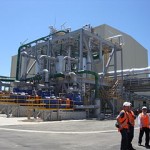In the wake of the Morgan Foundations hard-hitting report “Climate Cheats”, Simon Johnson (aka Mr February) asks if New Zealand Steel received millions of emission units for free under the New Zealand Emissions Trading Scheme industrial allocation provisions and yet still bought millions of the dubious international Russian units (ERUs) to make windfall arbitrage profits.
The Morgan Foundation’s latest report “Climate Cheats” has been sizzling across the various media in the last week. The language of the report is refreshingly non-neutral and unashamedly emotive. It is in equal parts compelling and condemning.
Carbon credit scheme a farce, reported the Herald. Climate change cheating, said Radio New Zealand. Dodgy deals, climate swindle, climate fraudsters, junk carbon scam, said report author Geoff Simmons.
As a consequence, “Climate Cheats” is an easy and engaging read – no mean feat given the topic – that is also thoroughly well-researched. It really is a ‘high integrity’ credit to it’s authors (if you pardon the pun).
In this post I want to look specifically at one particular type of corporate conduct – arbitrage profiteering – covered in “Climate Cheats”.
Continue reading “Did NZ Steel make windfall arbitrage profits from the ETS?”

 Norwegian wood and newsprint transnational Norske Skog Tasman (NZ) Ltd ‘exports itself’. Simon Johnson aka Mr February looks at the flight of another manufacturer and CO2 emitter and exporter as it lays off staff and reduces production. Wasn’t the very generous free allocation of units in the New Zealand Emissions Trading Scheme meant to keep exporters like Norske Skog Tasman in New Zealand? Or have we just removed the price signal from exporters for no valid reason and stuffed the NZETS?
Norwegian wood and newsprint transnational Norske Skog Tasman (NZ) Ltd ‘exports itself’. Simon Johnson aka Mr February looks at the flight of another manufacturer and CO2 emitter and exporter as it lays off staff and reduces production. Wasn’t the very generous free allocation of units in the New Zealand Emissions Trading Scheme meant to keep exporters like Norske Skog Tasman in New Zealand? Or have we just removed the price signal from exporters for no valid reason and stuffed the NZETS?